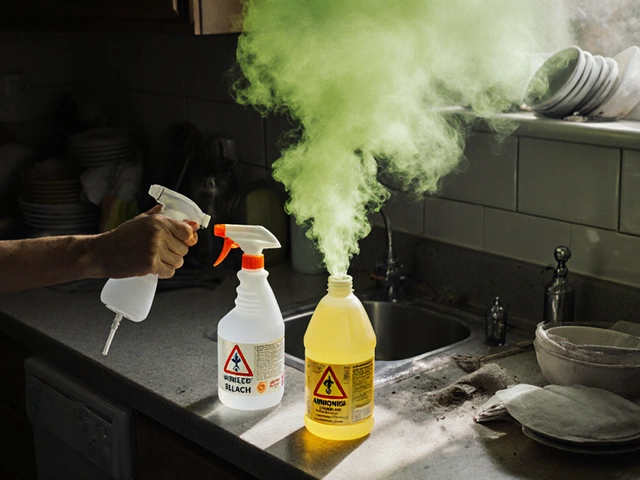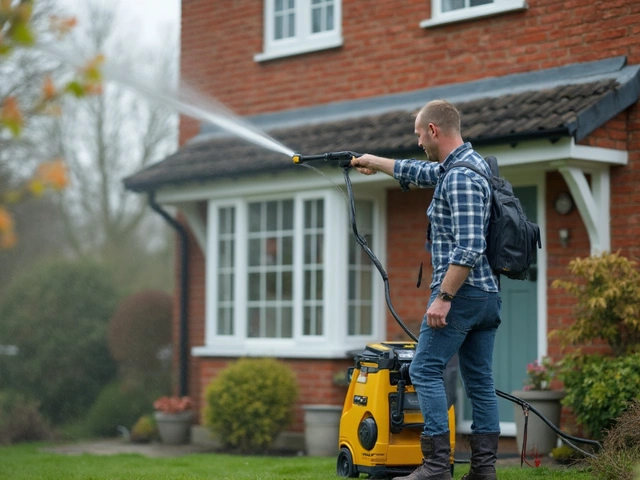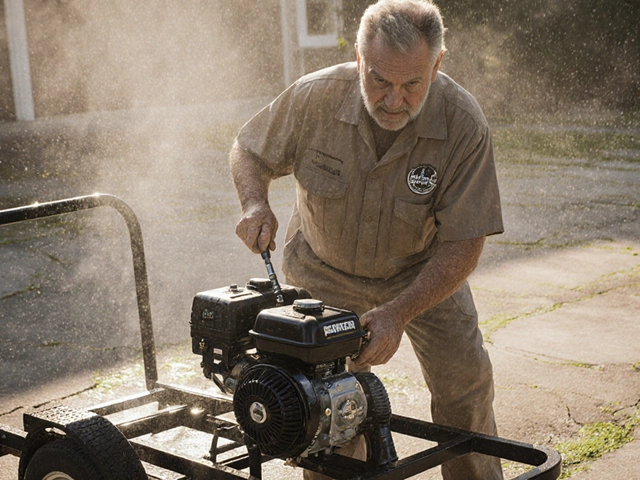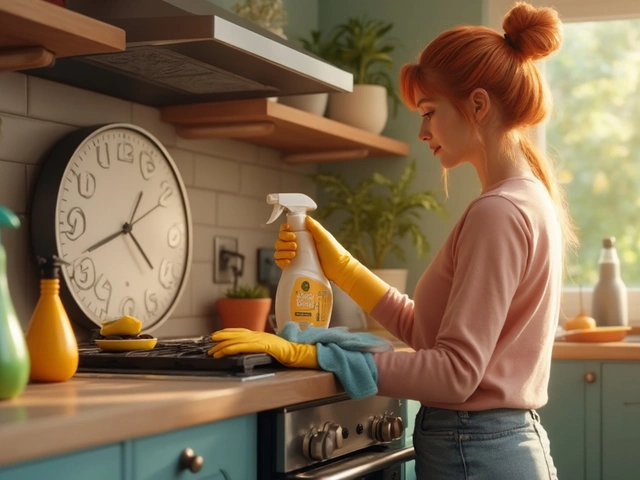So, what's the deal with pressure washing and power washing? You hear these terms tossed around all the time, but are they the same thing? Spoiler alert: they're not! Both are great for blasting away dirt and grime, but the way they go about it is a bit different.
Pressure washing relies on the power of water at high speeds. It's like a superhero with a very focused stream of water, ideal for surfaces that can hold up against a good bit of force. Want to spruce up your driveway or deck? Pressure washing might be your best buddy.
Power washing, on the other hand, takes it up a notch by adding heat. This combo of high pressure and hot water is particularly effective at tackling tough stains and really ingrained dirt. Think greasy or oily spots that need a little extra oomph to clean.
Curious about which is best for you? It all boils down to what you're cleaning and your personal preference for handling stains and grime. Keep reading to figure out the right choice for your project and make your outdoor space shine!
- Introduction to Cleaning Techniques
- How Pressure Washing Works
- Power Washing Explained
- Choosing the Right Method
Introduction to Cleaning Techniques
If you're looking to spruce up your outdoor spaces, you've probably come across terms like pressure washing and power washing. But what exactly do these techniques involve, and how do you decide which to use? Let's break it down.
Before we dive into the specifics, know that both methods use a powerful stream of water to get the job done. This means they're great for removing dirt, mold, and grime. But their differences lie mainly in their approach, which can significantly impact your cleaning results.
What Makes Pressure Washing Special?
Pressure washing focuses on using a high-velocity jet of water to clean surfaces. No added chemicals, no heat – just good ol' water pressure doing the work. It's ideal for surfaces like concrete, stone, and decks where force can safely be applied. A simple yet effective method, it’s like using a magic wand to wash away months (or years) of dirt in minutes.
Why Choose Power Washing?
Power washing, on the other hand, turns up the heat. It combines the high pressure of water with elevated temperatures, making it more effective for tougher jobs. Think grease stains on garage floors or stubborn mold growth that pressure washing might not fully tackle. That's where the power of heat comes to the rescue!
Given the similarities, many folks might think these terms are swappable. But knowing these nuggets of info can be the difference between achieving merely clean and absolutely spotless results.
| Aspect | Pressure Washing | Power Washing |
|---|---|---|
| Water Temperature | Cold | Hot |
| Suitable For | Hard surfaces like driveways | Stubborn stains like grease |
Once you grasp the key distinctions, you can better plan your outdoor maintenance strategies. Stick around as we delve further into their unique processes and how to best use them!
How Pressure Washing Works
So, you've decided to dive into the world of pressure washing. Great choice! It's an effective way to scrub off dirt and make surfaces look brand new. Wondering what makes this technique tick? Let's break it down.
The Basics
Pressure washing uses high-pressure water jets to clear away stubborn grime. Imagine a garden hose - now crank up the pressure a few notches, and you've got a pressure washer. This method is perfect for dirt that just won't budge with normal scrubbing.
Equipment Components
The magic lies in the core components: a water pump, an engine (or motor), and a hose with a spray nozzle. Turn on the washer, and the pump sends water zooming through the hose at high speed, ready to tackle dirt and debris.
- Water Pump: Think of this as the beating heart of the system. It boosts water pressure by a significant margin.
- Engine or Motor: Depending on whether you go gas or electric, this part powers the pump.
- Hose and Nozzle: The final piece that directs that power onto whichever surface needs cleaning.
Why Pressure Matters
Pressure is key here. Too little, and you're just giving dirt a light sprinkle. Too much, and you might damage the surface. Pressure is measured in PSI (pounds per square inch). Most household pressure washers run between 1,300 and 2,400 PSI, which is strong enough to clean but gentle enough to prevent damage.
Safety with Pressure Washing
Safety first, folks. It might seem like fun waving that power wand around, but you need to stay cautious. Wear goggles, avoid pointing the stream at yourself, others, or fragile items, and keep your feet in check.
Pressure washing can prove to be your best friend to maintain outdoor spaces. Just make sure you handle the equipment carefully and know when to give it a break, especially if you have fancy paint or delicate surfaces nearby!

Power Washing Explained
You might wonder why power washing gets a special mention when it sounds a lot like pressure washing. Well, the kicker here is heat. That's right! Power washing doesn't just rely on high-pressure water; it adds steam into the mix. This combination of pressure and heat makes it super effective, especially on grimy surfaces.
Imagine this: you’ve got some serious stains on your concrete surfaces or maybe an old oil spill on your driveway. A regular pressure wash might struggle, but when you bring in the heat with power washing, the job suddenly seems doable. The hot water helps break down stubborn stains and kill unwanted organisms like algae and mold.
When to Use Power Washing?
It's a great choice for large areas and really tough cleaning tasks. Here are a few situations where you might opt for power washing:
- Cleaning concrete surfaces like driveways and sidewalks that have oil spots or deep stains.
- Dealing with mold and mildew on surfaces that can handle the heat.
- Preparing surfaces for painting by thoroughly removing old paint and grime.
Power washing is great for commercial cleaning projects too. Parking lots, building exteriors, and even large industrial equipment can often benefit from this method.
Considerations
While power washing is powerful, it's not suitable for all surfaces. The heat and pressure can damage surfaces like wood decks or other materials that can warp or crack under heat, so always consider the material before you start blasting away.
If you’re thinking about doing it yourself, make sure you've got the right equipment and know-how, otherwise, hiring a professional with experience in pressure washing and power washing might be the way to go.
Choosing the Right Method
Deciding between pressure washing and power washing isn't just a coin toss. It's all about figuring out what kind of job you have on your hands. Let's break it down so you can choose the best fit for your needs.
Surface Type
If you’re dealing with something more delicate like painted wood or siding, you'd want to lean towards pressure washing. This method is gentler, making it a great choice if you're worried about damaging paint or causing unnecessary wear and tear.
For tougher surfaces like concrete or commercial equipment, power washing is your go-to. The added heat makes a big difference for breaking down materials that are otherwise stubborn, like oil stains.
Type of Stain
Not all dirt is the same, right? If you’re dealing with organic materials like mold or mildew, heat can really help. Therefore, a power washing approach will likely be more effective. For just removing dirt, however, pressure washing can get the job done without the extra heat.
Availability and Budget
When it comes to availability and cost, pressure washing equipment is generally cheaper and easier to find. If you're hiring a pro, pressure washing services may cost less because they use less energy-intensive equipment.
Feel like numbers speak louder than words? Well, here you go:
| Method | Best For | Average Equipment Cost |
|---|---|---|
| Pressure Washing | General dirt and grime | $100 - $200 |
| Power Washing | Stubborn stains and grease | $300 - $600 |
Environmental Considerations
Finally, consider the environmental impact. The heat from power washing uses more energy, which might not be the best choice if you're trying to keep things green. Stick with pressure washing for a lower energy footprint.
Making the right choice depends on what you're cleaning, the condition of the surfaces, and your budget. Take a moment to consider these factors, and you're sure to make the right call for your project!





